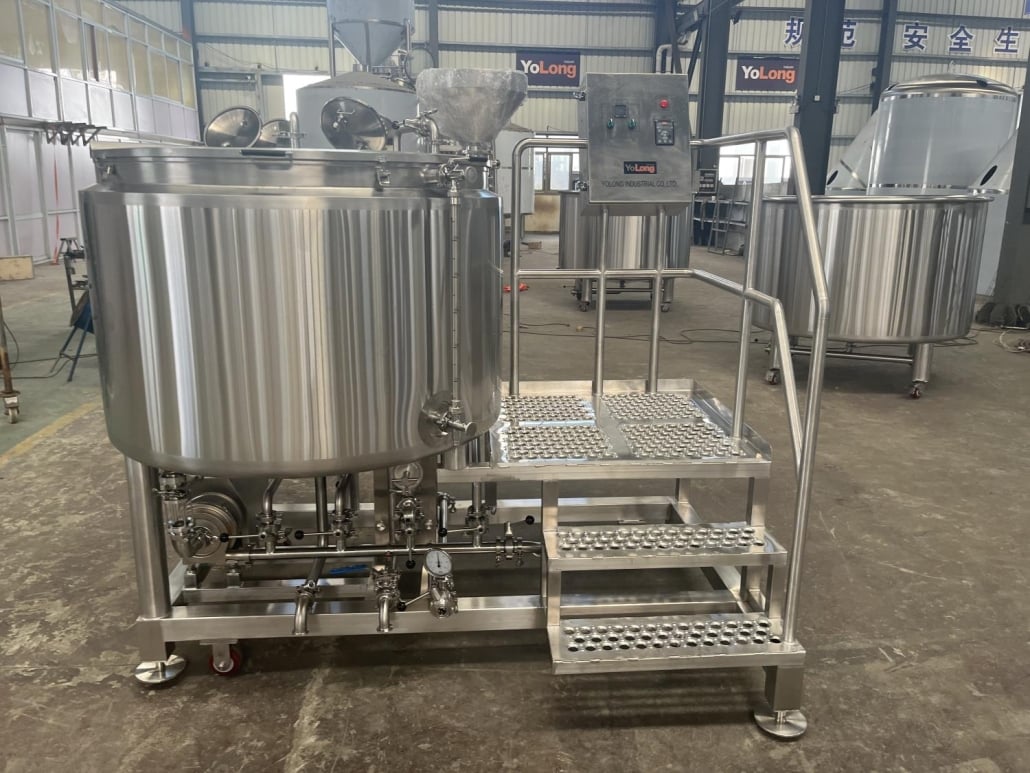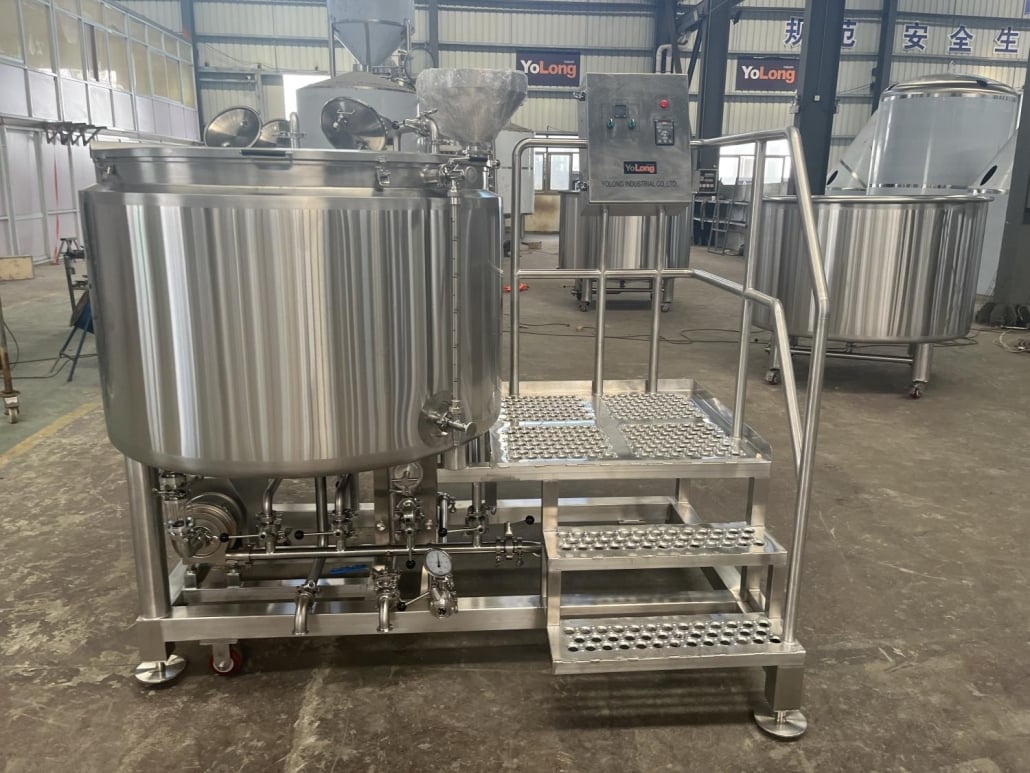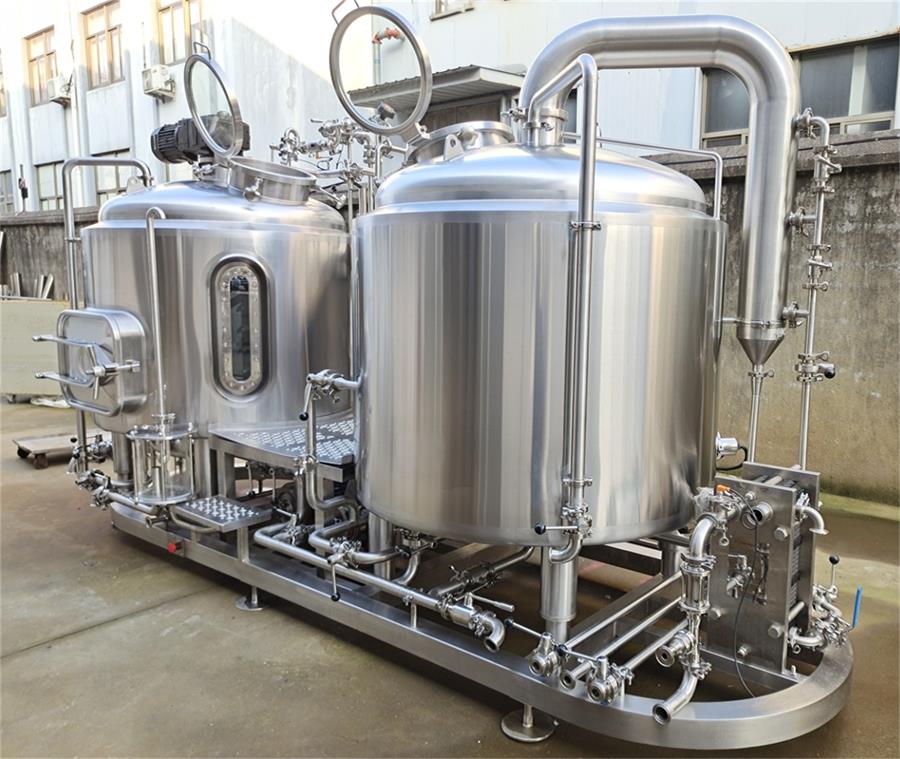Complete Guide to Microbrewery Equipment
Overview of Microbrewery Equipment
Starting a microbrewery is an exciting endeavor that brings craft beer lovers closer to the brewing process. Choosing the right microbrewery equipment plays a crucial role in determining the quality, efficiency, and style of the brewery’s output. A well-equipped microbrewery can handle the complete brewing process, from mashing to fermentation, and ultimately to bottling. This guide covers everything you need to know—from equipment types, setup costs, and space requirements to the nitty-gritty of maintaining each piece. Whether you’re a seasoned brewer looking to upgrade or just exploring the idea of starting a brewery, this guide has you covered.

Essential Equipment for a Microbrewery
Understanding the key components of microbrewery equipment is vital. Each piece serves a purpose in the brewing process, and the combination of all parts determines the success of the beer produced. Let’s break down the core equipment needed.
| Equipment | Description |
|---|---|
| Milling Machine | Crushes grains to release fermentable sugars. |
| Mash Tun | Heats water and grain to create mash, which is crucial for converting starches into sugars. |
| Lauter Tun | Separates grain from wort (sugar water) for fermentation. |
| Kettle | Boils the wort to sterilize and add hops for flavor. |
| Fermentation Tanks | Houses wort for fermentation, where yeast transforms sugars into alcohol and CO₂. |
| Conditioning Tanks | Lets beer mature, enhancing flavors and carbonation. |
| Refrigeration System | Keeps tanks at optimal temperatures to ensure yeast acts correctly during fermentation and conditioning. |
| Kegging/Bottling Equipment | Prepares the finished product for distribution or on-site serving. |
Each of these components has a unique function, and the quality and compatibility between these parts are critical. For example, selecting a mash tun without the right capacity could bottleneck your brewing process, while undersized fermentation tanks might limit the volume of each batch.
Microbrewery Equipment Setup and Layout: What You Need to Know
A microbrewery layout impacts not only the efficiency of the brewing process but also the overall feel and aesthetic appeal of the space. Ensuring ample space for each equipment piece while maintaining an efficient flow from one process to the next is key. Consider these factors when designing your microbrewery setup:
| Aspect | Consideration |
|---|---|
| Space Requirements | Plan a layout that allows for easy access to each piece. Take measurements of equipment and factor in space for staff. |
| Capacity Planning | Estimate output goals (e.g., barrels per month) and choose equipment that can meet these goals without overloading. |
| Aesthetic Design | Ensure the design complements the theme of your brewery, especially if it’s customer-facing. |
| Ventilation and Safety | Install adequate ventilation to manage steam and control temperature. Follow safety regulations for hot surfaces. |
| Future Expansion | Consider equipment that can be upgraded or added to as the brewery grows. |
For example, the fermentation area should be separated from customer-facing areas to manage both aesthetics and sanitation. Additionally, consider scalability for long-term growth by choosing modular equipment or reserving additional floor space.
Microbrewery Equipment Capacity and Customization
Customizing microbrewery equipment to meet specific brewing needs and accommodate spatial constraints can make a significant difference in efficiency. Here’s a comparison of options for capacity and customization.
| Factor | Details |
|---|---|
| Capacity | Common microbrewery setups range from 3-10 barrels per batch. Evaluate expected demand and space availability. |
| Customizable Design | Manufacturers often offer customization on height, width, and special features like automated temperature control. |
| Modularity | Modular setups allow for easy expansion. If you plan on scaling, invest in equipment with this flexibility. |
| Aesthetic Customization | From rustic copper finishes to modern stainless steel, the look of your equipment can reflect your brand style. |
Cost of Microbrewery Equipment
The cost of setting up a microbrewery can vary dramatically based on the brand, size, and customization options. Here’s a general cost guide for key equipment.
| Equipment | Estimated Price Range (USD) |
|---|---|
| Milling Machine | $3,000 – $15,000 |
| Mash Tun and Lauter Tun | $5,000 – $50,000, depending on capacity and materials |
| Kettle | $7,000 – $40,000 |
| Fermentation Tanks | $10,000 – $100,000, varies by size and features |
| Conditioning Tanks | $8,000 – $30,000 |
| Refrigeration System | $10,000 – $50,000 |
| Kegging/Bottling | $5,000 – $30,000 |
The above prices are approximate and can vary widely based on customization and capacity. For example, a higher-end kettle with automated features will cost more than a standard model.
Choosing the Right Supplier for Microbrewery Equipment
Selecting a reliable supplier can greatly impact the performance and longevity of your microbrewery equipment. Here’s a breakdown of factors to consider when evaluating suppliers.
| Factor | Details |
|---|---|
| Reputation and Reviews | Research customer reviews, industry reputation, and reliability. Seek references if possible. |
| Price Range and Transparency | Look for suppliers with competitive pricing and clear policies on customization and warranties. |
| After-Sales Support | Quality after-sales service is essential for installation, maintenance, and repairs. |
| Customization Options | Choose suppliers with a range of customization options to ensure equipment meets your unique brewing needs. |
| Location and Shipping | Local suppliers can reduce shipping costs and potentially provide faster support. |
A well-regarded supplier might be slightly pricier but can save you in the long run through better support and more durable equipment.
Installation, Operation, and Maintenance of Microbrewery Equipment
Proper installation and regular maintenance are critical to ensuring the longevity and functionality of microbrewery equipment. Here’s what to keep in mind for each stage:
| Stage | Details |
|---|---|
| Installation | Installation by professionals is essential, especially for larger, complex equipment like fermenters and conditioning tanks. |
| Daily Operation | Follow standard operating procedures, including temperature controls, sanitation practices, and process monitoring. |
| Maintenance | Routine cleaning and servicing are crucial to prevent contamination, wear, and tear. For instance, tanks should be sanitized between batches. |
Consistent operation and care help prevent breakdowns and keep equipment in optimal condition, ultimately impacting the quality of your brew.

Advantages and Disadvantages of Microbrewery Equipment
Each piece of equipment comes with its pros and cons based on factors like cost, efficiency, and ease of use. Here’s a summary:
| Equipment | Advantages | Disadvantages |
|---|---|---|
| Milling Machine | Produces finer grains for better sugar extraction. | Requires regular maintenance to avoid clogging. |
| Mash Tun | Essential for starch-to-sugar conversion. | Can be bulky; may require more space. |
| Fermentation Tanks | Enables the yeast to convert sugars into alcohol. | High-quality tanks can be expensive, especially with temperature controls. |
FAQ
| Question | Answer |
|---|---|
| What is the typical startup cost for a microbrewery? | Costs vary, but most startups require $100,000 to $500,000 for equipment alone. |
| How much space is required? | Microbreweries typically require a minimum of 500 square feet, depending on production goals. |
| Can I start small and expand later? | Yes, many microbreweries start with small, modular systems that can scale up as demand grows. |
| Is financing available for equipment? | Many suppliers offer financing options, or you can seek business loans specifically for microbreweries. |
Share this entry
Interested in learning more about Brewing Systems including additional details and pricing information? Please use the form below to contact us!
YOLONG BREWERY EQUIPMENT FAQS
- Commercial Brewery / Craft Brewery / Microbrewery / Nanobrewery
- What is The Difference Between Craft Beer and Industrial Beer?
- The Bespoke Differences In Custom Brewing Systems
- Everything You Need to Know About Kettle Souring
- How to Choose Brewing Equipment for Your business?
- How To Choose The-Best Partner To Build Your Commercial Microbrewing System?
- Two Detection Sensors That You Need To Use In Your Brewhouse System
- Remote Control Applications in Brewing Equipment/How does it work?
- How To Clean Your Brand New Brewery Tanks?

